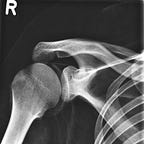Cardiac Cycle and the Regulation of Cardiac Output
Definitions
Published in
1 min readApr 26, 2017
- Cardiac Output — Stroke Volume * Heart Rate
- - Stroke Volume — Volume of blood ejected from the hear per beat. — Average value of 70 mL/stroke
- - Heart Rate — Number of times heart beats per minute — Average value of 70 beats/min (bpm)
- Therefore it can be said Average Cardiac Output = 70mL/beat * 70 beats/min = 4900mL/beat
- End Diastolic Volume — Volume of blood left in the heart after diastole
- End Systolic Volume — Volume of blood left in the heart after systole.
- Ejection Fraction — Fraction of the End Systolic Volume which remains after systole.
- End Systolic Volume / Stroke Volume.
Factors Affecting the Stroke Volume
- Contractility of the ventricle
- EDV
- Afterload
Ventricular Contractility
- Ventricles never empty
- More contractility — Higher volume of blood ejected.
- If the Volume of blood ejected increases, the stroke volume increases
This is extrinsically controlled via the action of glucagon, adrenaline and thyroxine.
Certain drugs can also achieve this affect, such as amphetamines and salbutamol.
Afterload
Afterload is the pressure in the aorta during ejection.
The heart pumps against the afterload.
A high afterload decreases the stroke volume.
